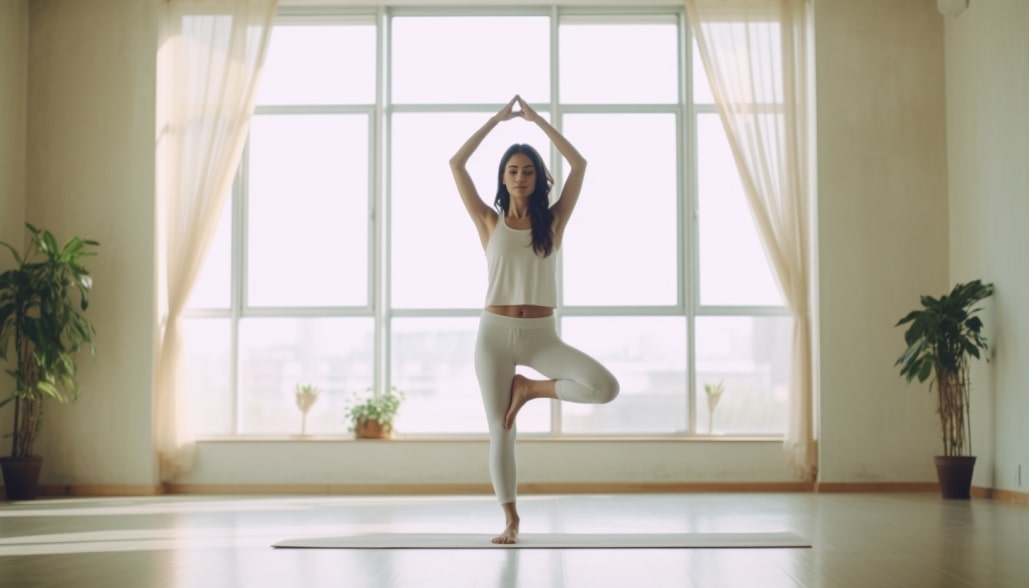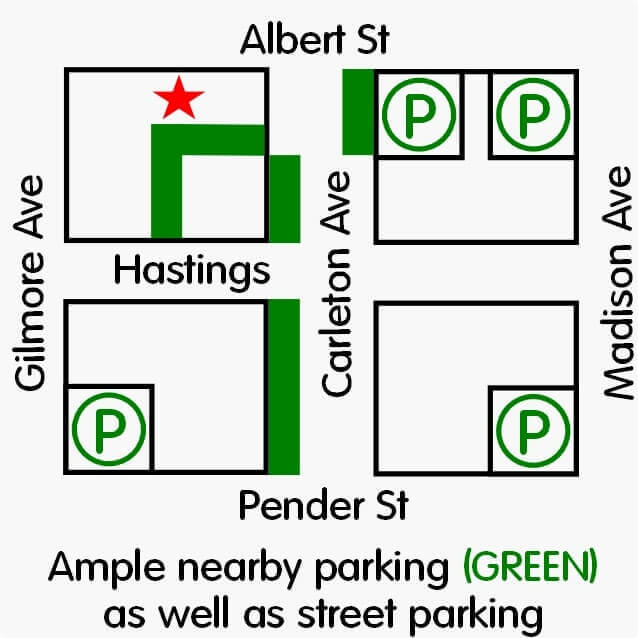
Navigating through life can become a daunting task when you’re constantly feeling dizzy or off balance. Vestibular rehabilitation therapy offers a path to regain control, promoting stability and reducing vertigo-like symptoms. This guide will take you through a comprehensive journey into the world of vestibular rehabilitation, a specialized form of therapy that helps manage disorders related to balance and dizziness. Whether you’re a patient looking for relief, a caregiver seeking to understand, or a healthcare professional aiming to expand your knowledge, this guide offers insights into the benefits, techniques, and success stories of this transformative approach to balance therapy. Embrace the journey to better balance and let’s dive into the world of vestibular rehabilitation.
Introduction to Vestibular Rehabilitation
What is vestibular rehabilitation?
Vestibular rehabilitation (VR) is a specialized form of physiotherapy designed to alleviate primary and secondary problems caused by vestibular disorders. The vestibular system, located within the inner ear, is responsible for maintaining our sense of balance and spatial orientation. When this system gets disrupted, it can lead to symptoms like dizziness, vertigo, and balance issues.
VR aims to help patients manage and overcome these symptoms through a program of exercises and lifestyle changes. The specific treatment plan is usually tailored to the individual patient’s symptoms and needs, and it can involve a combination of balance exercises, gaze stabilization exercises, and habituation exercises.
The therapy is widely recognized for its efficacy in managing a range of balance-related conditions, from benign paroxysmal positional vertigo (BPPV) to vestibular neuritis, Ménière’s disease, and post-concussion syndrome. It’s also used as a treatment for balance problems related to ageing or conditions such as stroke or Parkinson’s disease.
Conditions treated by vestibular rehabilitation
Vestibular rehabilitation can be beneficial for various conditions that affect balance and stability. Some of the most common include:
- Benign paroxysmal positional vertigo (BPPV): This condition is characterized by brief episodes of mild to intense dizziness. BPPV is usually triggered by specific changes in the position of your head.
- Ménière’s disease: An inner ear disorder that can lead to dizzy spells (vertigo), ringing in the ear (tinnitus), hearing loss, and a feeling of fullness or congestion in the ear.
- Vestibular neuritis or labyrinthitis: Both are inflammations of the inner ear usually caused by a viral infection, resulting in the onset of vertigo, nausea, and loss of balance.
- Age-related balance problems: As we age, we may experience balance problems due to changes in our body systems, including the vestibular system.
- Neurological disorders: Conditions such as stroke, Parkinson’s disease, or multiple sclerosis can cause balance problems that may be helped by vestibular rehabilitation.
How does vestibular rehabilitation work?
Vestibular rehabilitation works by leveraging the body’s natural ability to compensate for balance problems. This process, known as vestibular compensation, involves the brain learning to use other senses (such as vision and proprioception) to substitute for the deficient vestibular system. The goal of VR is to accelerate and enhance this compensation process.
Typically, a vestibular rehabilitation program includes exercises for eye-head coordination, balance training, walking, and improving general fitness. These exercises are designed to provoke symptoms of dizziness and unsteadiness in a controlled manner, with the aim of desensitizing the brain to movements that cause these symptoms.
Benefits of Vestibular Rehabilitation
Vestibular rehabilitation therapy (VRT) is a form of therapy that aims to restore normal function of the vestibular system – a sensory system located in your inner ear that plays a crucial role in maintaining balance and eye movements. Vestibular disorders often lead to symptoms such as vertigo (a sense of spinning), dizziness, and balance problems, which can significantly impact your quality of life. Fortunately, with VRT, you can reap several benefits that contribute to your overall well-being and daily functioning.
Improved Balance and Stability
One of the primary benefits of VRT is the improvement in balance and stability. As the vestibular system plays a key role in maintaining your body’s balance, any disorder affecting this system can lead to instability and frequent falls. VRT, through a series of exercises and treatments, can help retrain your brain to recognize and process signals from the vestibular system and other body senses, thereby improving your balance and reducing the risk of falls.
According to a study, participants who underwent VRT showed significant improvements in balance, demonstrating the effectiveness of this therapy.
Key takeaway: Vestibular rehabilitation can significantly improve your balance and stability, reducing the risk of falls and injuries.
Reduced Dizziness and Vertigo
Dizziness and vertigo are common symptoms associated with vestibular disorders. These symptoms can be incredibly distressing, often leading to nausea, vomiting, and a reduced ability to carry out daily activities. VRT utilizes specific exercises that help the brain adapt to and compensate for any damage to the vestibular system, thereby reducing symptoms of dizziness and vertigo.
A systematic review of multiple studies concluded that VRT is effective in reducing symptoms of vertigo and dizziness, significantly improving patients’ quality of life.
Key takeaway: Vestibular rehabilitation can effectively reduce symptoms of dizziness and vertigo, aiding in symptom management and leading to an improved quality of life.
Enhanced Quality of Life
Dealing with a vestibular disorder can have a significant impact on your quality of life. The constant dizziness, vertigo, and balance problems can make it difficult to perform everyday tasks, thereby affecting your independence and emotional well-being. However, by improving balance, reducing symptoms of dizziness and vertigo, and helping you regain confidence in your physical abilities, VRT can greatly enhance your overall quality of life.
Key takeaway: By addressing the symptoms of vestibular disorders, vestibular rehabilitation can enhance your overall quality of life, restoring your confidence and independence._
Seeking Professional Help
If you’re experiencing persistent symptoms of a vestibular disorder, seeking professional help is a crucial step towards recovery. This involves finding a specialist in vestibular rehabilitation and understanding what to expect during your treatment journey.
Finding a Vestibular Rehabilitation Specialist
Not all physical therapists are trained in vestibular rehabilitation. Therefore, it’s important to find a specialist who has the necessary training and experience to provide effective treatment.
You can start by asking for a referral from your primary care physician or ENT specialist. Additionally, organizations like the Canadian Academy of Audiology and Vestibular Disorders Association (VeDA) have directories to help you find a specialist in your area. Remember to check the qualifications of the therapist, ask about their experience in treating patients with vestibular disorders, and ensure that they can customize a rehabilitation program based on your specific needs.
Key takeaway: Finding a qualified vestibular rehabilitation specialist is crucial to ensure effective treatment. Utilize referrals and professional directories to find a trained and experienced therapist.
What to Expect During Your First Appointment
During your initial appointment, your vestibular rehabilitation therapist will perform a comprehensive assessment to understand your symptoms, medical history, and overall health status. This will typically involve a variety of balance and eye movement tests, and may also include gait analysis and positional testing.
Your therapist will then use this information to create a personalized treatment plan designed to address your specific symptoms and improve your vestibular function. This plan will usually involve a combination of exercises to be performed both in the clinic and at home, along with other therapeutic strategies such as manual therapy or patient education.
Key takeaway: Your first appointment with a vestibular rehabilitation therapist will involve a comprehensive assessment and the development of a personalized treatment plan.
Monitoring Progress and Adjusting Treatment Plans
Vestibular rehabilitation is not a “one-size-fits-all” approach. Your therapist will closely monitor your progress throughout the therapy, adjusting your treatment plan as needed based on your response to the exercises and overall improvement.
Remember that recovery from vestibular disorders takes time and patience. Regular follow-up appointments will be necessary to assess your progress, manage any challenges, and modify your treatment plan to ensure optimal results. Regular communication with your therapist about your symptoms and any difficulties you encounter is crucial to ensure that your treatment plan is as effective as possible.
Key takeaway: Regular monitoring and adjusting of your treatment plan are crucial aspects of vestibular rehabilitation. Regular communication with your therapist will help ensure the effectiveness of your treatment.
Self-Help Strategies for Managing Symptoms
While professional help is essential in managing vestibular disorders, there are also a number of self-help strategies that can complement your therapy and help manage your symptoms more effectively.
Home Exercises for Balance and Stability
One key component of vestibular rehabilitation therapy is the exercises you do at home. These exercises, which will be prescribed by your therapist, often involve head movement, eye exercises, balance training, and gait exercises. The purpose of these exercises is to retrain your brain to compensate for the disorienting signals it’s receiving due to the vestibular disorder, which can help reduce symptoms and improve balance and stability.
Key takeaway: Home exercises are a key part of vestibular rehabilitation therapy and can significantly contribute to improving your balance and stability.
Lifestyle Changes to Support Vestibular Health
Adopting certain lifestyle changes can also help support your vestibular health. These may include maintaining a healthy diet, staying hydrated, getting regular exercise, and avoiding triggers such as excessive caffeine or alcohol. It’s also beneficial to manage stress effectively, as high stress levels can exacerbate vestibular symptoms.
Key takeaway: Lifestyle changes, including a healthy diet, regular exercise, and stress management, can support your vestibular health and contribute to recovery.
Coping with Setbacks and Flare-ups
It’s important to understand that the road to recovery from vestibular disorders can be a winding one, with occasional setbacks and flare-ups of symptoms. But don’t be discouraged. Stay in close contact with your vestibular rehabilitation specialist during these times and continue your prescribed exercises. Remember that recovery is a journey, and it’s perfectly normal to experience ups and downs along the way.
Key takeaway: Coping with setbacks and flare-ups is part of the recovery journey. Stay motivated and committed, and keep in close contact with your therapist during challenging times.
Exploring Additional Treatment Options
While vestibular rehabilitation is a primary treatment approach for vestibular disorders, there may be additional treatment options that can be used in conjunction with VRT to manage symptoms and support recovery.
Medications for Symptom Management
In some cases, medication may be used to help manage the symptoms of vestibular disorders. These can include antiemetics to control nausea and vomiting, antihistamines to reduce dizziness, and benzodiazepines to relieve acute vertigo. It’s important to discuss any potential side effects and interactions with your healthcare provider before starting any new medication.
Key takeaway: Medication can sometimes be used in conjunction with vestibular rehabilitation to manage symptoms.
Surgical Interventions for Severe Cases
In severe cases where conservative treatments like vestibular rehabilitation and medication aren’t effective, surgical interventions may be considered. The type of surgery will depend on the underlying cause of the vestibular disorder. It’s important to discuss the potential risks and benefits with your healthcare provider if considering this option.
Key takeaway: In severe cases, surgical intervention may be considered. Discuss this option thoroughly with your healthcare provider.
Complementary Therapies to Support Recovery
Complementary therapies, such as acupuncture, yoga, tai chi, and mindfulness-based stress reduction, may also be beneficial in supporting recovery from vestibular disorders. These therapies can help reduce stress, improve balance, and enhance overall well-being, supporting the effects of vestibular rehabilitation therapy. However, it’s important to always discuss any new therapies with your healthcare provider before starting them.
Key takeaway: Complementary therapies can be beneficial in supporting recovery, reducing stress, and improving balance. Always discuss any new therapies with your healthcare provider.
Embrace the Journey to Better Balance 💪
The journey to better balance through vestibular rehabilitation is a process, not a one-time event. Understanding this can help set realistic expectations for your recovery and keep you motivated and committed to your progress.
Recap of Key Points
Vestibular rehabilitation is a specialized form of therapy that can help manage symptoms of vestibular disorders, improve balance and stability, and enhance quality of life. Seeking help from a qualified vestibular rehabilitation specialist is a crucial step towards recovery. Additionally, self-help strategies and additional treatments can support your recovery journey.
Key takeaway: Vestibular rehabilitation offers numerous benefits, but it’s important to stay committed to the process and communicate regularly with your therapist.
Setting Realistic Expectations for Recovery
Recovery from vestibular disorders doesn’t happen overnight. It’s a process that takes time and patience. Setting realistic expectations can help keep you motivated and prevent feelings of frustration or discouragement if progress seems slow. Remember, every step forward, no matter how small, is a step towards better balance and well-being.
Key takeaway: Set realistic expectations for your recovery journey. Every step forward, no matter how small, is progress.
Staying Motivated and Committed to Progress
Keeping motivated and committed to your recovery is key to successful vestibular rehabilitation. Remember, it’s normal to experience ups and downs along the way. Stay positive, keep up with your prescribed exercises and treatments, and communicate regularly with your therapist.
Key takeaway: Staying motivated and committed to your recovery is crucial to the success of vestibular rehabilitation.
Frequently Asked Questions
How long does it take to see improvements with vestibular rehabilitation?
The length of time it takes to see improvements with vestibular rehabilitation varies depending on the individual and the severity of their vestibular disorder. Some people may notice improvements within a few weeks, while others may take several months. Regularly attending your therapy sessions and doing your prescribed home exercises can help speed up your progress.
Can I do vestibular rehabilitation exercises on my own?
While some vestibular rehabilitation exercises can be done at home, it’s important to do these exercises under the guidance of a trained vestibular rehabilitation specialist. They can ensure you’re doing the exercises correctly and safely, and can adjust the exercises as needed based on your progress.
What should I do if my symptoms worsen during treatment?
If your symptoms worsen during treatment, it’s important to communicate this to your vestibular rehabilitation therapist. They can reassess your condition and adjust your treatment plan as needed. Don’t try to push through worsening symptoms without seeking advice from your therapist.
Are there any side effects of vestibular rehabilitation?
Vestibular rehabilitation exercises can sometimes cause temporary increases in symptoms such as dizziness or imbalance. However, these side effects are usually temporary and should improve with continued practice of the exercises. If you’re experiencing persistent or severe side effects, it’s important to discuss this with your therapist.
Will my insurance cover vestibular rehabilitation therapy?
Coverage for vestibular rehabilitation therapy varies depending on your specific insurance plan. It’s always a good idea to check with your insurance provider before starting therapy to understand what is covered and what your potential out-of-pocket costs might be.
Sources
- “Vestibular Rehabilitation Therapy (VRT).” Vestibular Disorders Association, 21 Apr. 2023, vestibular.org/article/diagnosis-treatment/treatments/vestibular-rehabilitation-therapy-vrt/. Accessed 6 June 2023.
- Shiozaki, Tomoyuki, et al. Effects of Vestibular Rehabilitation on Physical Activity and Subjective Dizziness in Patients with Chronic Peripheral Vestibular Disorders: A Six-Month Randomized Trial. Apr. 2021, https://doi.org/10.3389/fneur.2021.656157. Accessed 6 June 2023.
- “Canadian Academy of Audiology (CAA) Professional Association.” Canadian Academy of Audiology | Professional Association Dedicated to Enhancing the Role of Audiologists as Primary Hearing Health Care Providers, 27 Mar. 2015, canadianaudiology.ca/. Accessed 6 June 2023.
- “Discover a Life Rebalanced – Vestibular Disorders Association.” Vestibular Disorders Association, 31 May 2023, vestibular.org/. Accessed 6 June 2023.

